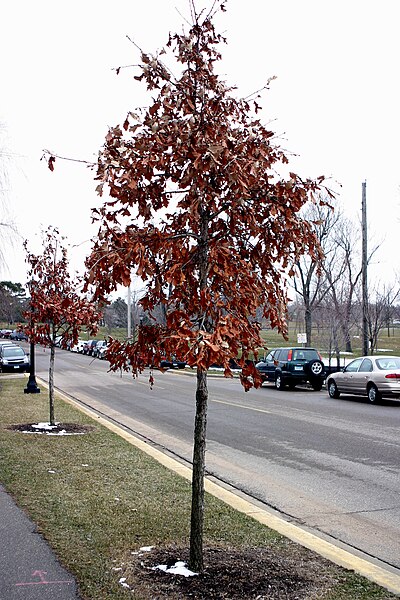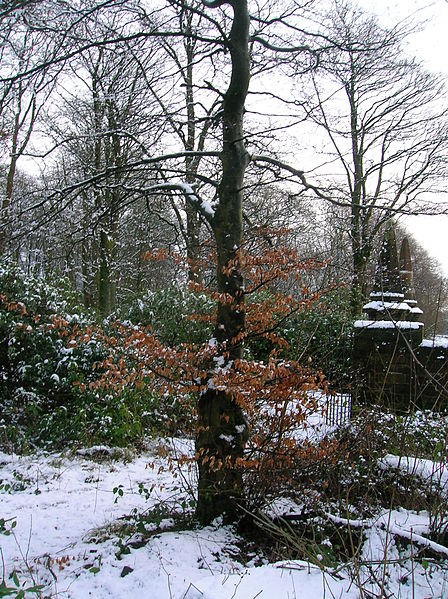Marcescence is the withering and persistence of plant organs that normally are shed, and is a term most commonly applied to plant leaves. The underlying physiological mechanism is that trees transfer water and sap from the roots to the leaves through their vascular cells, but in some trees as autumn begins, the veins carrying the sap slowly close until a layer of cells called the abscission layer completely closes off the vein allowing the tree to rid itself of the leaf. Leaf marcescence is most often seen on juvenile plants and may disappear as the tree matures. It also may not affect the entire tree; sometimes leaves persist only on scattered branches. Marcescence is most obvious in deciduous trees that retain leaves through the winter. Several trees normally have marcescent leaves such as oak (Quercus), beech (Fagus) and hornbeam (Carpinus), or marcescent stipules as in some but not all species of willows (Salix). All oak trees may display foliage marcescence, even species that are known to fully drop leaves when the tree is mature. Marcescent leaves of pin oak complete development of their abscission layer in the spring. The base of the petiole remains alive over the winter. Many other trees may have marcescent leaves in seasons where an early freeze kills the leaves before the abscission layer develops or completes development. Diseases or pests can also kill leaves before they can develop an abscission layer.

American beech (Fagus grandifolia) in winter
Oak (Quercus) with marcescent foliage
Typical partial marcescence on a mature beech (Fagus sylvatica) tree
Red Oak (Quercus rubra) leafing out before dropping marcescent leaves
Persistence is the retention of plant organs, such as flowers, seeds, or leaves, after their normal function has been completed, in contrast with the shedding of deciduous organs after their purpose has been fulfilled. Absence or presence of persistent plant organs can be a helpful clue in plant identification, and may be one of many types of anatomical details noted in the species descriptions or dichotomous keys of plant identification guides. Many species of woody plants with persistent fruit provide an important food source for birds and other wildlife in winter.
Persistent strobilus of Equisetum arvense
Larix decidua has persistent seed cones.
Equisetum arvense has persistent strobili.
This Cornus florida cultivar has persistent fruit into winter.








